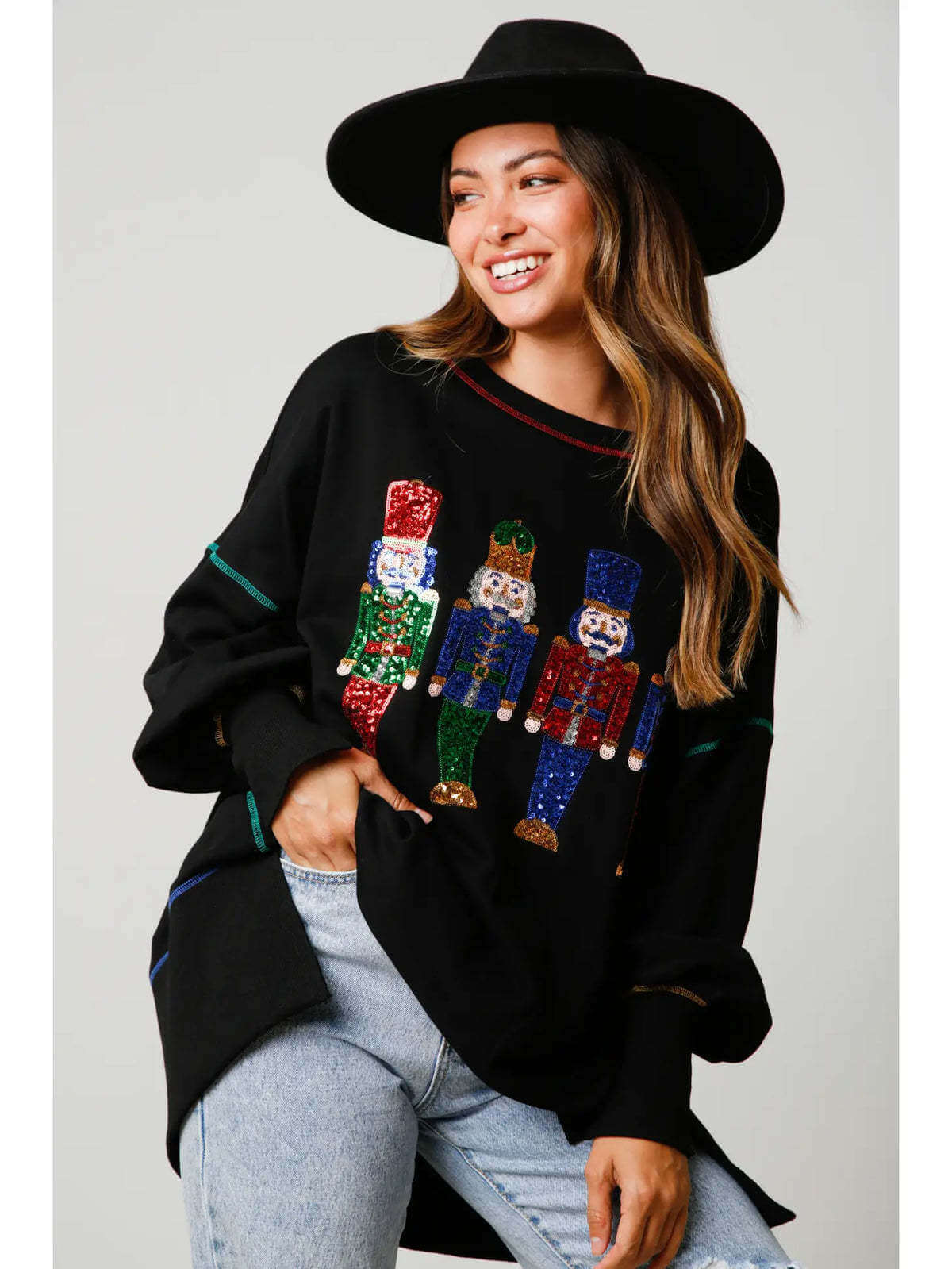On the fashion stage, embroidery, as an ancient and artistic craft, has always played a unique role in women’s clothing design.
From the beautiful patterns blooming from delicate stitches to the embroidery tradition with unique cultural connotations, this ancient craft has gradually evolved into a highlight of modern fashion.
This article will lead readers on a journey of embroidery, delving into its outstanding historical and contemporary value in women’s clothing design. We will unravel the mysterious veil of embroidery together and explore how it can blend the past and present, tradition and modernity in a unique way under the skillful hands of designers, creating stunning fashion works.
Let’s follow the trajectory of needle and thread together and explore the brilliant chapter of embroidery technology in women’s clothing design.
Historical and Cultural Background
Embroidery, an art that has been passed down for thousands of years, is like a magnificent historical scroll, blooming with its own unique brilliance in different cultures around the world.
Chinese Suzhou embroidery is renowned both domestically and internationally for its exquisite craftsmanship and rich cultural connotations, becoming a shining pearl in embroidery art. From imperial use to folk inheritance, the tradition of Suzhou embroidery has always shone brightly in Chinese culture, depicting the beauty of life in the threads of silk.
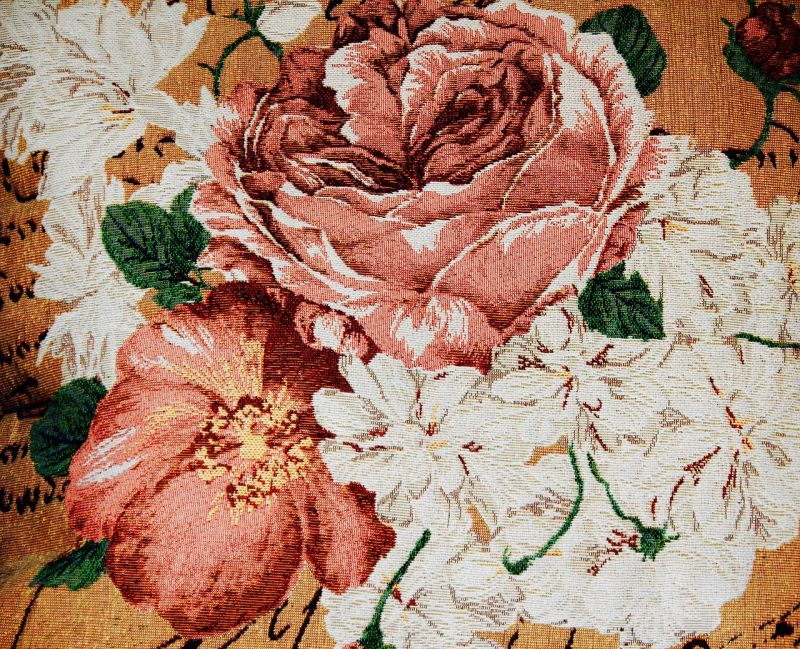
In France, high-end custom embroidery has injected a strong artistic atmosphere into the fashion industry. The embroidery here is not only a handicraft, but also a symbol of luxury and taste. In the atmosphere of French romance, embroidery has become a source of inspiration for fashion designers, giving clothing a unique delicacy and elegance.
Over time, embroidery has gradually transcended traditional boundaries and become the universal language of international fashion. On this diverse fashion stage, embroidery is no longer limited by geography, but constantly showcases new styles through the fusion of various cultures.
This chapter will delve into the historical origins of embroidery in different cultures and explore how it has evolved from a traditional craft to a source of inspiration for global fashion.
Embroidery techniques and styles
In the wonderful world of women’s clothing design, embroidery technology is a magical key that opens up infinite possibilities. From ancient cross stitch to exquisite bead embroidery, various embroidery techniques provide designers with rich expressions, injecting vitality into clothing invisibly.
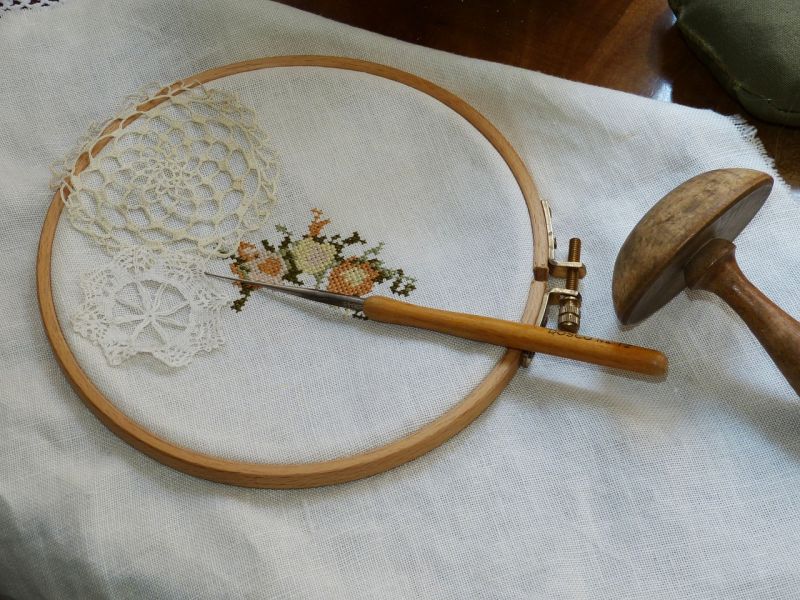
Cross stitch: As one of the oldest embroidery techniques, cross stitch is loved for its simple lines and rich patterns. Its unique cross stitching creates a delicate and regular grid, providing designers with a delicate canvas that can express rich patterns and details.
Mesh embroidery: This is an embroidery technique that pursues a lightweight feeling by creating small holes or “mesh” on the fabric, allowing designers to create a lightweight and transparent effect on clothing. This technology is often applied in summer women’s clothing, adding a relaxed and refreshing feeling to clothing.
Bead embroidery: Embedding small beads into fabric to create a unique light and shadow effect, bead embroidery injects a sense of luxury into clothing. Designers can create layered fashion pieces by cleverly matching beads of different colors and sizes, making clothing shine charming under lighting.
Application of different styles of embroidery:
The diversity of embroidery techniques enables it to adapt to various styles of women’s clothing design. Whether integrating ethnic customs, showcasing modern simplicity, or tracing romantic retro, embroidery can give clothing a unique atmosphere.
This section will delve into the application of different embroidery techniques in fashion design, demonstrating how they enrich the style and hierarchy of clothing. Through these different skills, designers are able to express their creativity in a richer way, creating unique and unforgettable fashion works for women.
Modern applications:
With the continuous changes in the fashion industry, embroidery technology is gaining new vitality in modern women’s clothing design. Designers skillfully combine traditional embroidery techniques with contemporary elements to create a series of stunning works. This chapter will delve into the extensive application of embroidery in contemporary women’s clothing and reveal its profound impact on the fashion industry.
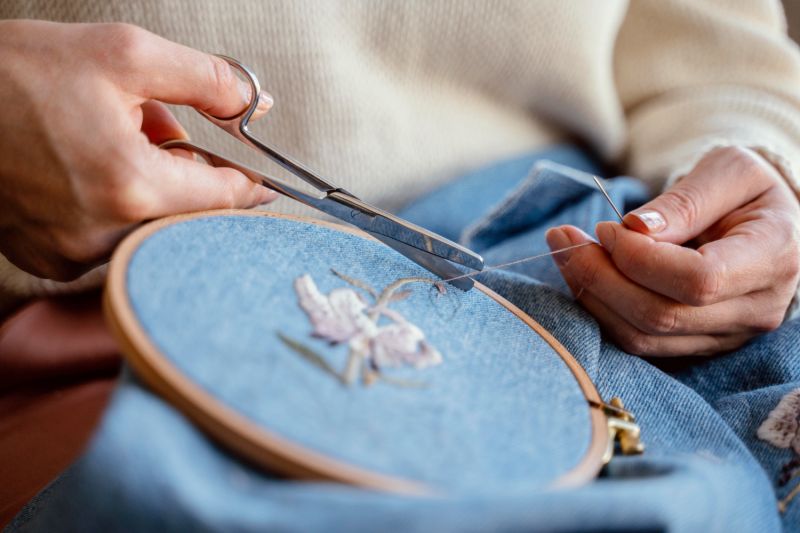
Embroidery and modern design: Contemporary designers regard embroidery as a unique design language, injecting art and personality into clothing through its delicate expression. Embroidery becomes a tool to break traditional boundaries, perfectly combining modern elements with traditional craftsmanship to create eye-catching fashion pieces.
Innovation of brands and designers: Many well-known brands and designers have brought a visual feast to the fashion industry through innovative applications of embroidery. Whether it is an evening dress embellished with embroidery or a fashion element on sports decoration, embroidery has become one of the iconic designs of many brands. Chanel, Dior, Gucci and other brands frequently feature embroidery works in their fashion shows, making positive contributions to the promotion of embroidery in the fashion field.
Progress in embroidery technology: With the continuous development of science and technology, embroidery technology has also ushered in a new era. The emergence of modern embroidery machines has made mass production possible, and has also given designers greater flexibility in the use of embroidery elements. The introduction of digital design and smart machines has injected more creativity and changes into embroidery.
The rise of personalized fashion: Embroidery not only shines in the designs of fashion masters, but also emerges in the wave of personalized fashion. More and more consumers choose to add personalized embroidery to clothing to show their unique taste and attitude towards life. This trend not only makes fashion more personalized, but also brings embroidery back into people’s daily lives.
By delving into these modern applications, we can not only see the unique position of embroidery in fashion design, but also feel the balance it finds between innovation and tradition. The application of embroidery in modern women’s clothing is enriching the diversity of fashion in a unique way, injecting a unique artistic atmosphere into the clothing.
Famous calligraphers
In the palace of fashion, some outstanding designers and fashion experts have given embroidery a deeper connotation with their unique insights. They not only see embroidery as a decorative technique, but also as a tool to express design concepts and personality.
Karl Lagerfeld: Former creative director of Chanel, Karl Lagerfeld is internationally renowned for his unique insights into fashion. His use of embroidery often breaks tradition and cleverly incorporates it into Chanel’s designs. Lagerfield emphasizes that embroidery, as an art form, is not only a decoration, but also a respect for brand history and culture.
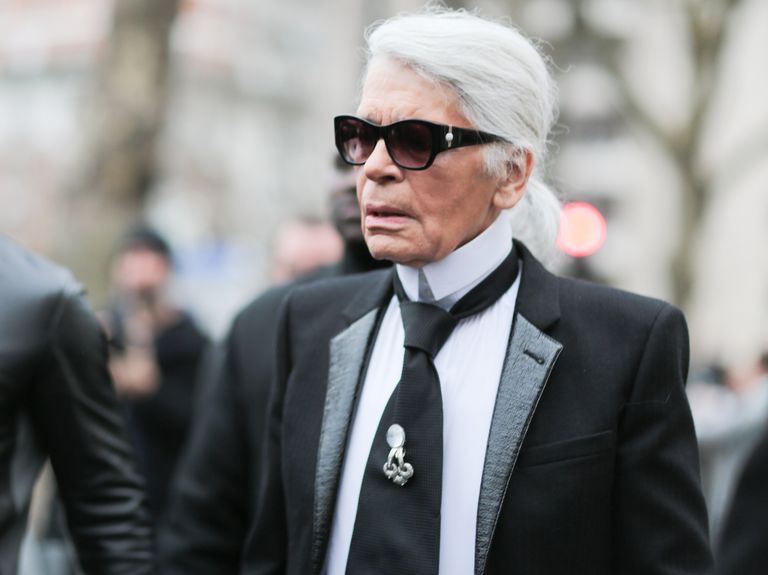
Sarah Burton: As the current creative director of the Alexander McQueen brand, Sarah Burton has taken the brand to new artistic heights through her exquisite use of embroidery. She is adept at blending tradition and modernity to create stunning complex patterns and meticulous embroidery, showcasing the brand’s profound craftsmanship tradition.
John Galliano: As one of the fashion industry’s geniuses, John Galliano has always been known for his bold and avant-garde designs. In his works, embroidery is often a unique and eye-catching element, injecting a dramatic and fashionable adventurous spirit into clothing. Galliano has broken the traditional boundaries of fashion by using embroidery, giving the brand a unique fashion language.
These designers are not only leading figures in the fashion industry, but also innovators who are pushing embroidery to new heights. Through their works, embroidery is no longer just a technique in fashion design, but also a medium to express the designer’s personality and creativity, becoming a shining pearl on the fashion stage.
Fabric selection and embroidery
The exquisite application of embroidery in women’s clothing design is not only reflected in clever embroidery techniques, but also closely related to the selected fabric. Different fabrics produce vastly different effects during the embroidery process, making embroidery an indispensable element in clothing design.
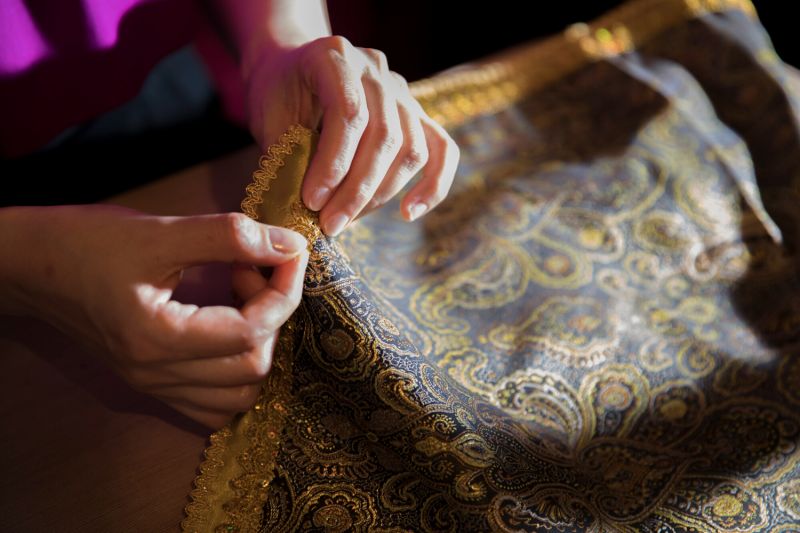
Silk: Silk is an ideal choice for embroidery, as its soft texture and luster make embroidery patterns more unique. Embroidery on silk fabrics is often characterized by gorgeous lines and exquisite patterns, injecting elegance and softness into women’s clothing.
Linen: The texture of linen gives embroidery a natural and primitive feeling. It is often paired with simple embroidery patterns to create a sense of tranquility and simplicity in clothing while retaining its freshness.
Wool: The thick texture of wool fabric makes the embroidery patterns more three-dimensional and rich. In winter women’s clothing design, embroidery on wool fabrics often presents a warm and retro atmosphere, adding a texture to the clothing.
Lace: Lace and embroidery complement each other, and the combination of the two can create designs that are extremely feminine. Embroidery on lace often focuses on natural elements such as flowers and leaves, injecting romance and elegance into clothing.
Synthetic Fabrics: The emergence of modern synthetic fibers has provided more choices for embroidery. The advantage of this fabric lies in its lightweight and easy maintenance, while embroidery can express a unique sense of fashion on it. Embroidered works on synthetic fibers usually have a modern and avant-garde feel, suitable for various styles of design.
Fabric selection is not only to meet the aesthetic needs of designers, but also to better integrate embroidered patterns into the overall clothing. By cleverly combining different fabrics and embroidery techniques, designers can create layered and personalized women’s clothing designs, showcasing the outstanding charm of embroidery in the fashion field.
If you want to learn more about clothing fabrics, you can read this article: 2024 Ultimate Guide to Clothing Fabrics
Creative workshops and exhibitions
Embroidery is not just limited to the fashion stage, it has also found a unique expression space in creative workshops and exhibitions. These places not only provide a display platform for embroidery art, but also promote communication and innovation among creators.
Workshop experience: More and more creative workshops provide opportunities for enthusiasts to learn embroidery skills. These workshops are usually hosted by experienced embroidery masters or designers, and participants have the opportunity to experience various embroidery techniques firsthand. This hands-on participation not only allows people to have a deeper understanding of the intricacies of embroidery, but also promotes the exchange of creativity and inspiration in the social process.
Embroidery Exhibition: Embroidery exhibitions held around the world have become important places to gather embroidery artists and enthusiasts. These exhibitions showcase a variety of embroidery works, from traditional to modern, from minimalist to luxurious, showcasing the diversity and infinite possibilities of embroidery. Visitors have the opportunity to appreciate embroidery art from different cultures and periods, thereby broadening their understanding of embroidery.
Marriage between fashion shows and embroidery: Some fashion shows also incorporate embroidery into their displays, making embroidery a part of the fashion industry. Designers present unique design concepts through embroidery, making fashion shows more vivid and interesting. The combination of embroidery and fashion shows not only showcases the artistic value of embroidery, but also injects new creative elements into the fashion industry.
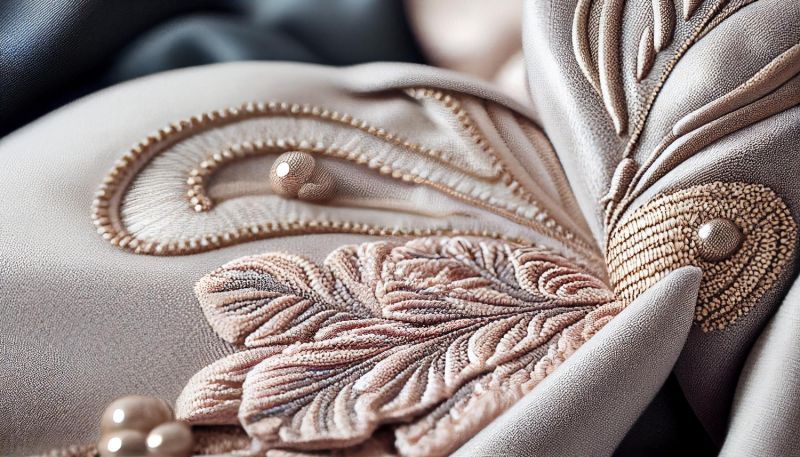
These creative workshops and exhibitions provide a platform for embroidery art to interact with audiences, share experiences, and showcase creativity. By participating in these activities, people have the opportunity to gain a deeper understanding of the historical origins, exquisite craftsmanship, and artistic expression of embroidery, while also inspiring more innovation and development in embroidery art.
Sustainable Fashion
In the evolution of the fashion industry, the brilliance of sustainable fashion is increasingly shining, and embroidery is integrating its unique charm into this sustainable innovation. Designers and brands are beginning to realize that the combination of traditional embroidery techniques and sustainable fashion concepts can not only create unique and exquisite designs, but also help reduce the impact of the fashion industry on the environment.
The selection of sustainable materials: The combination of embroidery and sustainable fashion is first reflected in the selection of materials. Designers are increasingly inclined to choose sustainable materials such as organic cotton, hemp fiber, and recycled polyester as the basis for embroidery. This choice not only reduces dependence on limited resources, but also reduces environmental pollution, giving embroidery art a green background.
Durability and Repair: The embroidery process emphasizes durability, making clothing more durable. This perfectly aligns with the concept of sustainable fashion, advocating long-lasting quality rather than the fleeting trend of “fast fashion”. In addition, the special nature of embroidery makes clothing easy to repair, avoiding waste caused by small flaws and further extending the lifespan of clothing.
Local embroidery and customization: The art of embroidery allows for artistic creation in specific areas of clothing, resulting in the design of local embroidery. This design concept is in line with the rise of customized fashion, where people can choose embroidery patterns, colors, and other elements based on personal preferences, making clothing unique and personalized. This is not only a rebellion against the “fast fashion” model, but also a strong resistance to resource waste.
Circular Economy and Embroidery: The application of embroidery is also closely linked to circular economy. Old clothes are infused with embroidery technology to bring new life. Designers have cleverly applied embroidery technology to second-hand clothing, not only giving it a unique charm, but also reducing the demand for new raw materials under the promotion of sustainable fashion, contributing to sustainable development.
Guided by sustainable fashion, embroidery has not only become a decorative element in fashion design, but also a perfect combination of art and environmental protection. Through innovative design concepts and the use of sustainable materials, embroidery has injected a fresh green trend into the fashion industry, leading a more sustainable and responsible fashion revolution.
Embroidery that influences society
Embroidery, as an ancient and expressive craft, is not only a part of fashion design, but also a powerful tool for expressing social perspectives and cultural significance. In some embroidery works, artists convey profound information about social issues, cultural traditions, or political positions through clever patterns and symbols. This makes embroidery not only a decoration, but also a expressive and thought-provoking medium.
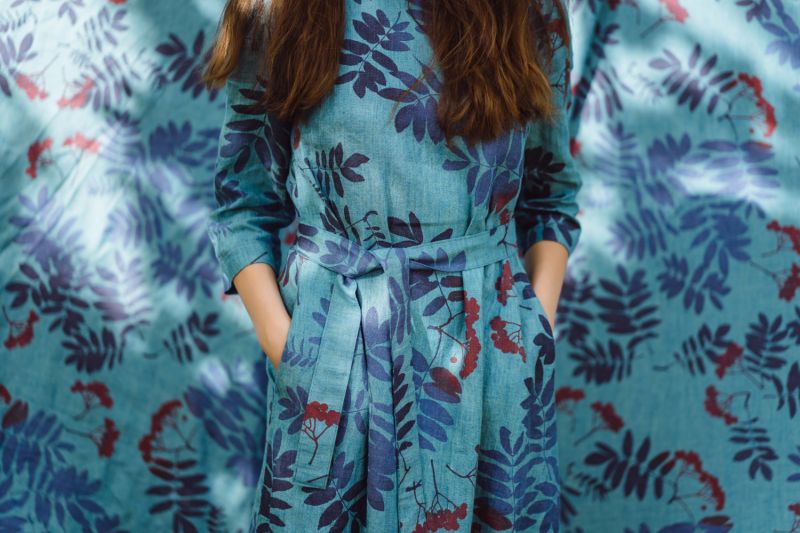
The call for social issues: Some embroidery works highlight and explore the important issues facing today’s society. Through the flexible use of lines and colors, embroidery can present concerns about environmental issues, social inequality, gender issues, and more. Such works not only stimulate the audience’s thinking on these issues, but also provide a platform for artists to express their personal opinions.
Protection and inheritance of cultural traditions: Embroidery, as one of the traditional handicrafts, is often used to express love and protection for cultural traditions. By incorporating ethnic elements and traditional patterns into embroidery works, artists are committed to inheriting and protecting cultures on the brink of extinction. This not only enables people to better understand various cultures, but also injects new vitality into the protection of cultural traditions.
Expression of political stance: The meticulous and unique nature of embroidery makes it an ideal medium for expressing political views. Some embroidery works convey the artist’s attitude and views on political phenomena through the presentation of political figures and social events through embroidery. Such works not only stimulate social attention to political participation, but also provide an independent way of expression in a repressed political atmosphere.
Inspiration from social reflection: Embroidery works guide audiences to deeply reflect on society through artistic interpretation of social phenomena. It is not only a presentation of beauty, but also a keen observation of social issues and the artist’s expectations for social change. Such works serve as inspiration, awakening people’s understanding of social issues and promoting the development of social consciousness.
Embroidery is not only a fashionable embellishment, but also a powerful tool to reflect the voice of society. Through creative expression of social issues, cultural traditions, and political positions, embroidery showcases its undeniable social influence on the fashion stage.
DIY embroidery and personalization
In the world of embroidery, DIY embroidery projects are an excellent way to stimulate creativity and customize individuality. This trend not only gives everyone the opportunity to become their own designer, but also injects more personalized and unique elements into fashion.
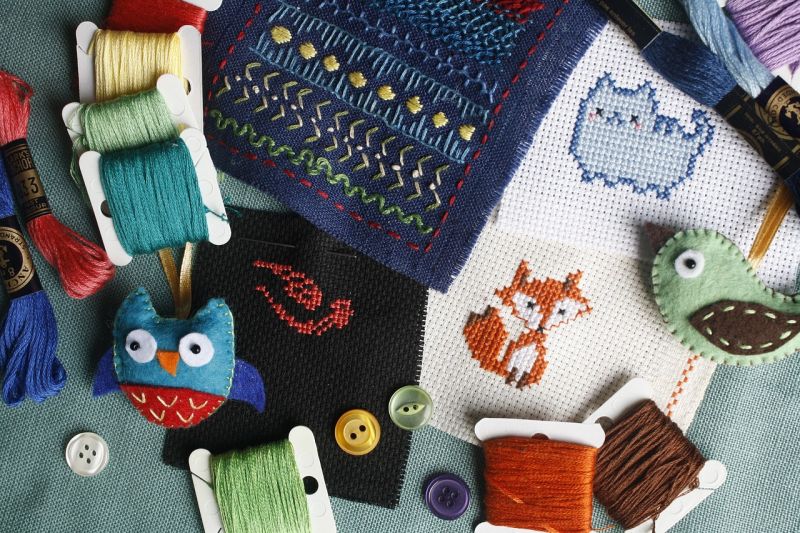
The charm of personalized customization: DIY embroidery provides enthusiasts with the opportunity to express their unique personality. By selecting elements such as patterns, colors, and wires, participants can create a unique artwork. This not only satisfies the desire for unique fashion products, but also makes fashion truly synonymous with personality.
Simple skills and beginner friendliness: Embroidery, as a handicraft, its basic skills are not complicated for beginners. Through some simple and easy to learn embroidery techniques, such as basic cross stitch and backline embroidery, the DIY embroidery project is suitable for participants at different levels. This makes embroidery no longer a high threshold handicraft, but a more approachable and popular art form.
The emergence of personalized fashion: DIY embroidery has driven the rise of personalized fashion. Participants can apply embroidery to various clothing and accessories, such as jeans, T-shirts, hats, etc., to revitalize these items. By freely combining patterns and colors, personalized fashion is no longer limited to commercial design, but is composed of artworks created independently by each individual.
The combination of social and creative elements: The DIY embroidery project also promotes the integration of social and creative elements. Embroidery workshops, online communities, and embroidery activities gather a group of people who love handicrafts. Everyone can share their creative achievements, exchange experiences, and enjoy the fun of creation together. This social experience adds more fun and motivation to DIY embroidery.
Through DIY embroidery, people can not only personally experience the charm of this ancient craft, but also find their own fashion language in creation. The rise of this trend has made embroidery no longer limited to professional fields, but an interesting way for everyone to express their creativity and personality.
Future trends
With the continuous development of society and the advancement of technology, embroidery will continue to move towards a more innovative and forward-looking future in women’s clothing design. Here are some directions that may become future trends:
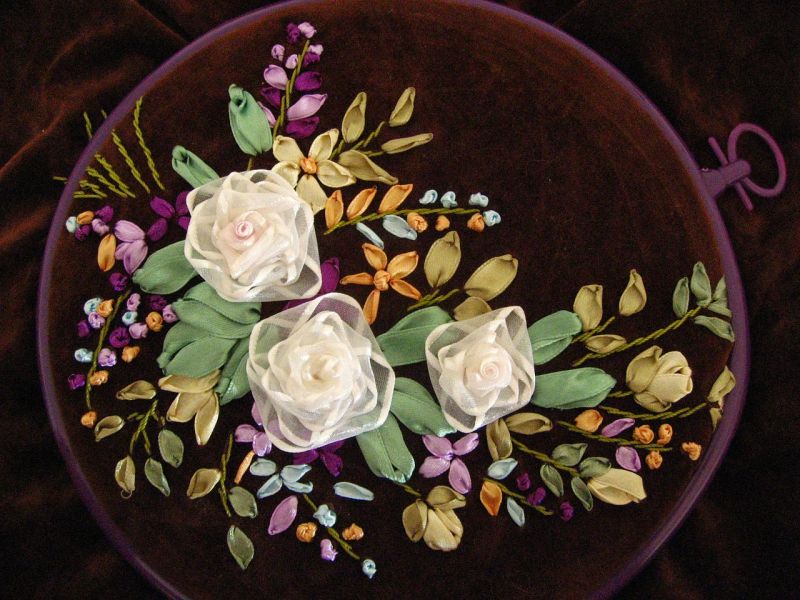
Digital embroidery and intelligent textile: With the rise of digital technology, digital embroidery will become an important direction in the future. Through computer-aided design (CAD) and digital control, designers can more accurately achieve complex embroidery patterns. The development of intelligent textile technology will also enable embroidery to be more integrated into intelligent fashion, creating innovative designs with interactivity and variability.
Sustainability and Social Responsibility: Future women’s clothing design will place greater emphasis on sustainability and social responsibility. Embroidery, as a handicraft, its sustainable characteristics make it an ideal element for promoting sustainable fashion. Designers will pay more attention to the environmental friendliness of the materials used in embroidery, as well as the positive impact of embroidery techniques on society.
Innovative fabrics and materials: In the future, more innovative fabrics and materials will emerge in women’s clothing design to meet the constantly changing fashion needs. The combination of biomimetic materials and wearable technology with new fibers will provide a broader creative space for embroidery. This innovation will enable embroidery to be more flexibly applied to different design concepts and clothing styles.
The popularization of personalized customization: With the development of technology, personalized customization will become more popular. In the future, people can directly participate in the embroidery design process through smart devices, choosing patterns, colors, and even embroidery styles. This personalized customization experience will make every embroidered women’s clothing a unique artwork.
Cultural Integration and International Cooperation: Future women’s clothing design will pay more attention to cultural integration and international cooperation. The embroidery traditions of different cultures will be integrated into each other in design, creating fashion with a global perspective. Designers will pay more attention to cultural elements on a global scale and inject more diverse connotations into embroidery.
In the future, embroidery will not only be a decorative technique, but also a cutting-edge innovation in fashion design. Through continuous breakthroughs in technology, materials, and design concepts, embroidery will continue to showcase a diverse and fashionable appearance, becoming an indispensable highlight in women’s clothing design.
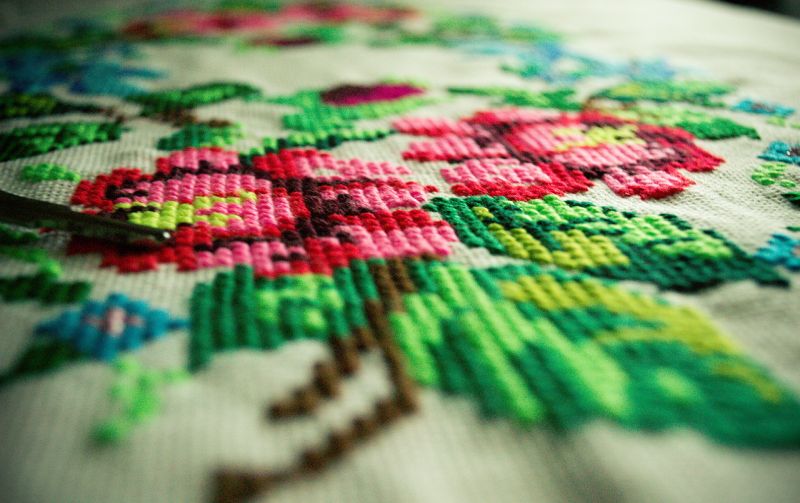
Conclusion
Embroidery, an ancient craft, has revitalized contemporary women’s clothing design and become a unique symbol of fashion. Through our exploration, we have found that embroidery is not only a form of decoration, but also an art that integrates history, culture, technology, and innovation. From traditional craftsmanship to modern design, from masterpieces to DIY creativity, embroidery enriches the language of fashion with its diversity and aesthetic value.
In this era full of change and innovation, embroidery plays an increasingly important role. It is not only a part of fashion design, but also a tool for expressing society, culture, and environment. Embroidery conveys concerns about social issues through patterns and lines, protects and inherits cultural traditions through unique techniques, and promotes the evolution of fashion through personalized and sustainable fashion.
In the future, we can look forward to seeing more innovation and development of embroidery in women’s clothing design. Digital technology, sustainability concepts, and personalized customization will inject new vitality into embroidery. Every stitch is an expression of independent thinking for the creator, and every interweaving of lines is a response to fashion and multiculturalism.
Let’s immerse ourselves together in the art of embroidery and experience the infinite possibilities of fashion. In this era full of creativity and passion, embroidery will continue to open a new chapter for the fashion industry, becoming a unique bright color in the brilliant picture of fashion and art blending together. May every embroidery become a witness to the pursuit of beauty and the unique expression of life, leading us towards a more exciting fashion path.



